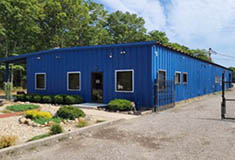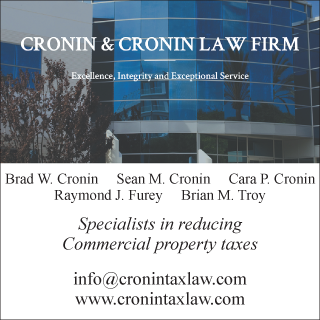The impact of the Appellate Div., Second Dept. decision on construction-related litigation, filings - by John Comiskey

On June 2, 2021, the Appellate Division, Second Department (the “Second Department”) issued a decision in a case that is likely to have a significant impact upon construction-related litigation and filings such as extensions of mechanic’s liens and applications for orders seeking to extend mechanic’s liens (as well as litigation in general). Specifically, in Brash v. Richards, ___ A.D.3d ___ (2d Dept. 2021), the Second Department decided that Governor Cuomo’s Executive Order 202.8 extending time limitations for filing of a claim, notice, motion or other process or proceeding, and subsequent executive orders extending Executive Order 202.8 constitute a toll of the time limitations set forth in Executive Order 202.8, not a suspension of such time limitations.
By way of background, Executive Law § 29-a(1) provides in relevant part that:
“the governor may by executive order temporarily suspend specific provisions of any statute, local law, ordinance, or orders, rules or regulations, or parts thereof, of any agency during a state disaster emergency if compliance with such provisions would prevent, hinder, or delay action necessary to cope with the disaster.”
Additionally, Executive Law § 29-a(2)(d) states that such executive order:
“may provide for the alteration or modification of the requirements of such statute, local law, ordinance, order, rule or regulations suspended, and may include other terms and conditions.”
In accordance with Executive Law § 29-a, on March 19, 2020, Governor Cuomo issued Executive Order 202.8, which provided:
“[i]n accordance with the directive of the Chief Judge of the State to limit court operations to essential matters during the pendency of the COVID-19 health crisis, any specific time limit for the commencement, filing, or service of any legal action, notice, motion or other process or proceeding, as prescribed by the procedural rules of the state, including but not limited to the criminal procedure law, the family court act, the civil practice law and rules, the court of claims act, the surrogate’s court procedure act, the uniform court acts, or by any other statute, local law, ordinance, order, rule, or regulation, or part thereof, is hereby tolled from the date of this executive order until April 19, 2020.”
Executive Order 202.8 was extended by subsequent executive orders, but Executive Order 202.67 provided that the extension of the time limitations set forth in Executive Order 202.8 and the subsequent executive orders was effective until November 3, 2020 for any civil case. Furthermore, Executive Order 202.72, issued on November 3, 2020, reaffirmed that as of November 4, 2020, the tolling period provided under Executive Order 202.8 and the subsequent executive orders extending same would no longer be in effect.
The difference between a toll and a suspension is critical, as a toll of time limitations literally stops the clock on time limits from running during the pendency of the effective dates of Executive Order 202.8 and the subsequent executive orders extending the time limitations provided under Executive Order 202.8, whereas a suspension merely suspends the time limitations. If Executive Order 202.8 and the subsequent executive orders constitute a toll, then the 228-day period between March 20, 2020 and November 3, 2020 to file or serve a legal action, notice, motion or other process or proceeding would be tacked on to applicable time limitations beginning on November 4, 2020. However, if Executive Order 202.8 and subsequent executive orders constitute a suspension, then if the time to file or serve a legal action, notice, motion or other process or proceeding expired during the intervening 228 days, any filing or service by, the latest, November 4, 2020 would be deemed timely.
The practical impact of the Second Department’s Brash decision on construction-related litigation and filings (such as the filing of an extension of a mechanic’s lien or obtaining an order extending a mechanic’s lien) for a construction-related claim that either accrued prior to March 20, 2020 or during the time period between March 20, 2020 and November 3, 2020, 228 days would be added to the relevant statute of limitations period (or other relevant time period, such as the filing of an extension of a mechanic’s lien or obtaining an order extending a mechanic’s lien) beginning on November 4, 2020.1 For instance, if a general contractor’s breach of contract claim against a subcontractor accrued on June 15, 2020, then the general contractor will have until January 29, 2027 to commence such lawsuit (in the absence of the 228-day tolling period, the six-year statute of limitations would have expired on June 15, 2026). Additionally, if a mechanic’s lien was timely filed on March 11, 2020, then the time to file an action to foreclose the mechanic’s lien or to file an extension of a mechanic’s lien or to obtain a court order extending such lien under Lien Law § 17, which would have otherwise expired on March 11, 2021, would be extended by the 228-day period between March 20, 2020 and November 3, 2020. Thus, October 25, 2021 would the new date to file a lawsuit to foreclose such mechanic’s lien or to file an extension of the mechanic’s lien or to obtain a court order extending such mechanic’s lien, depending on which is appropriate under the circumstances of the mechanic’s lien.
A critical component of the Second Department’s Brash decision is the analysis that the language of Executive Law § 29-a(2)(d) allows the Governor to do more than merely suspend statutes during a state disaster emergency, and that the Governor can alter or modify a statute’s requirements such that tolling of time limitations contained within a statute is within the Governor’s authority. The Second Department’s Brash decision is binding on all lower courts in New York State unless and until either one of the other three departments of the Appellate Division issues a ruling that is contrary to Brash, or the Court of Appeals overrules Brash. Thus, any entity in the construction industry that has claims which accrued either before or during the time period that Executive Order 202.8 and the subsequent executive orders that extended the time limitations provided in Executive Order 202.8, should consult counsel as to the applicable time limitations within which to assert claims and/or file an extension of mechanic’s lien or obtain a court order extending a mechanic’s lien.
1 Some practitioners/commentators may argue that if a claim accrued during the 228-day period that the toll was in effect, a plaintiff would not receive the benefit of the full 228-day period, but, rather, only the period of time that remained from the date of accrual of the claim until November 3, 2020.
John Comiskey is an attorney at Forchelli Deegan Terrana LLP in Uniondale, NY.
Suffolk County IDA supports expansion of A&Z Pharmaceuticals


The evolving relationship of environmental consultants and the lending community - by Chuck Merritt
When Environmental Site Assessments (ESA) were first part of commercial real estate risk management, it was the lenders driving this requirement. When a borrower wanted a loan on a property, banks would utilize a list of “Approved Consultants” to order the report on both refinances and purchases.








.gif)
.jpg)